No cars to run length of George Street for first time since 1900 as light rail project begins
CARS no longer run the length of George Street from Central to Circular Quay for the first time since 1900 as Sydney braces itself for light rail. Take a tram trip back in time in our amazing video.
NSW
Don't miss out on the headlines from NSW. Followed categories will be added to My News.
SINCE the first motor vehicle was imported into Sydney 115 years ago, cars have been able to travel the full length of George St.
Now, for the first time since 1900, thanks to the NSW Government’s decision to build tram lines through the CBD, cars will no longer travel the entire route from Central to Circular Quay using our main thoroughfare.
Major construction work on the Sydney light rail, scheduled to begin at 8pm today, means a whole city block will be shut down on the street that normally carries 25 per cent of all north-south traffic through the city centre.
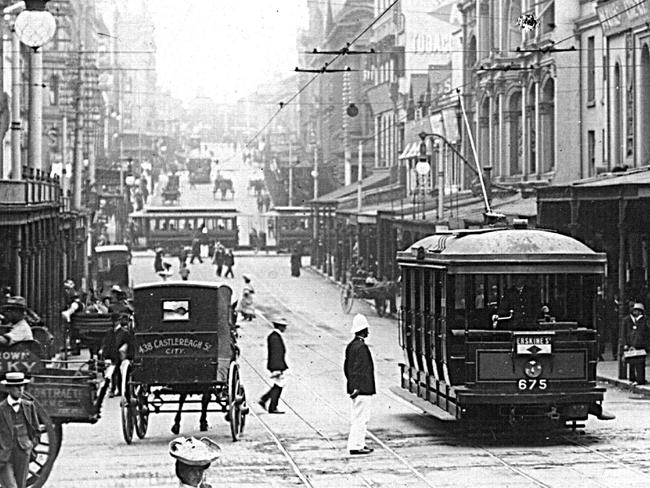

Light rail construction contractors, ALTRAC, will throw up barriers on George St, at the intersections with Market and King streets, closing off access to all general traffic.
The only vehicles allowed into the construction zone are those belonging to residents, emergency services and for deliveries to businesses along that section of the street, including the massive Westfield retail complex.
When the whole 2.4 kilometre George St section of the tram line is completed, in about 370 days’ time, cars will not be able to use a one-kilometre section, or 40 per cent, of the thoroughfare.
Town Hall to Hunter St is becoming a pedestrian plaza.



And Sydney’s annual Anzac Day march will be held along Elizabeth St from next year due to the construction of the light rail.
It will be the first time war veterans and their supporters will not march along George St in more than 80 years. The NSW branch of the RSL, which organises and conducts the annual commemoration of our war dead, expects the move to be permanent, even after the tram way is built.
City of Sydney historian Lisa Murray said records show the first motor vehicle arrived in Sydney in 1900.
The NRMA said the car, a French Dion Bouton, was delivered to the CBD bicycle dealer W. J. C Elliot.
This was just a year after the first electric trams trundled down George St.
Ms Murray said by 1904, the police had issued licences to just three “motor cabs”.
By 1914, the police had their own vehicle, known as a “Black Mariah”.
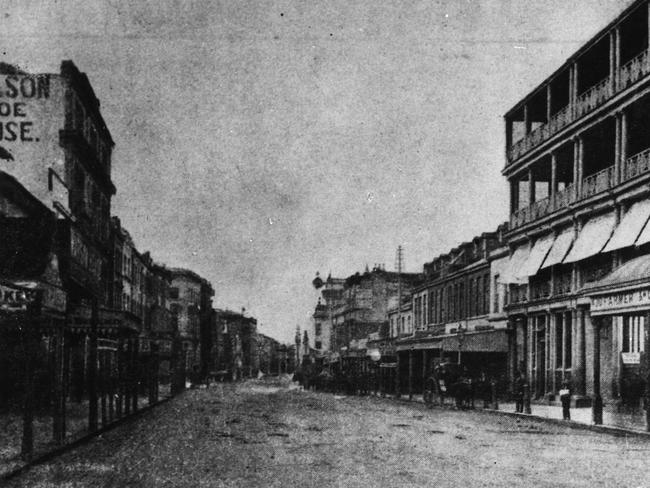
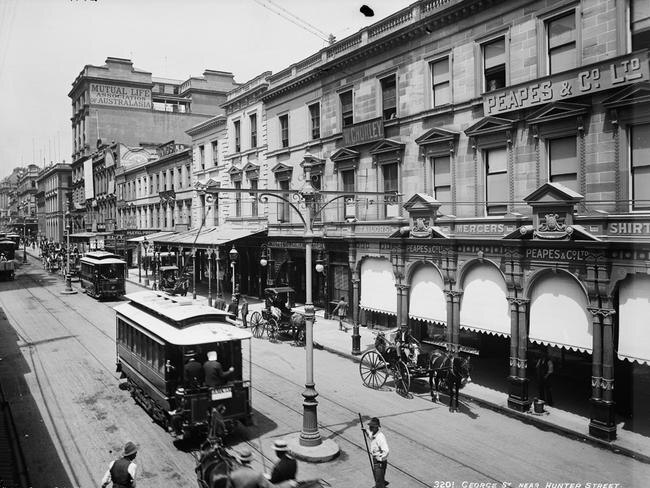

“While there are no records of when the first car drove down George St, I think we can assume that the first car would have made trips down George,” Ms Murray said.
In 1958, the state government of the day decided that buses would replace trams in Sydney. The last tram ran down George St on 23 November of that year.
The current government took buses off George St on 4 October, 2015.
Transport authorities say they are “nervous” that pushing cars off Sydney’s main street will clog surrounding routes including Elizabeth, Castlereagh, York and Clarence streets.
With 157,000 vehicles a day entering the city, traffic on vital east-west routes — including Market, Park, Liverpool and King streets — could increase up to 27 per cent, adding 12 per cent to CBD travel times.
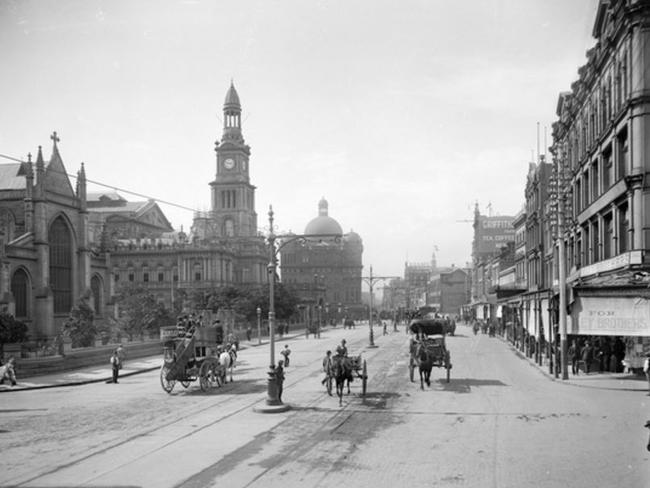

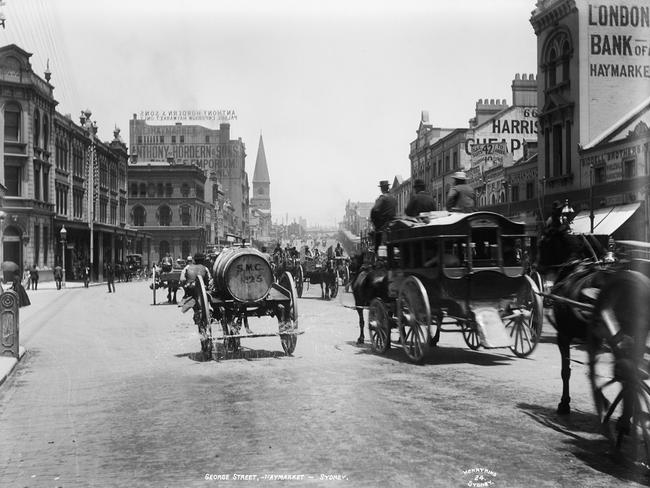
And the knock-on effect will hit commuters across Sydney as pressure rises on key arterial roads that feed into the city.
CBD Coordinator General Marg Prendergast today urged motorists to avoid the CBD.
“If you don’t need to drive to the city, please don’t,” Ms Prendergast said.
“Try public transport.
“The most important thing, avoid that city centre. Use the routes that we have set up on the edges, the Cahill Expressway, Macquarie St, College St, Wentworth Ave, or Harris St, Goulburn St, the Western Distributor and then come in from that way.
“They will save you time because it’s going to be really congested around George St.
Ms Prendergast said the real test of the closure of George St will occur during the AM peak on Monday.
“We are really nervous about Monday morning because we have moved the buses to all the parallel north-south routes, Elizabeth, Clarence, York and if all the traffic that uses George St now, uses those routes, they’ll slow down and delay our buses.”
Ms Prendergast said traffic going down George St to Market or King streets will experience delays “because we be diverting everyone”.
“Better off not to drive to that area.”



